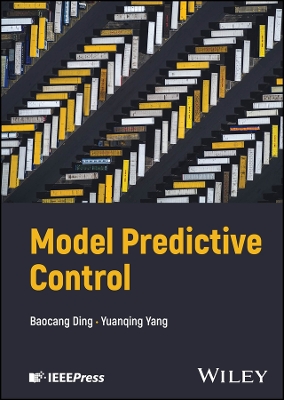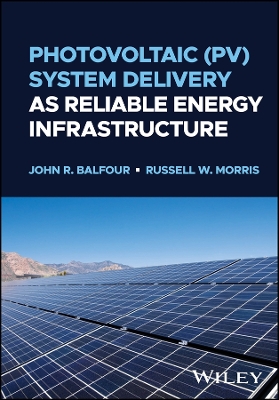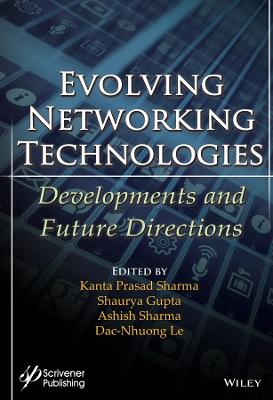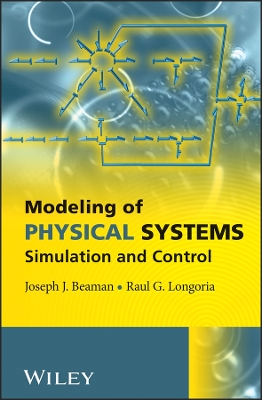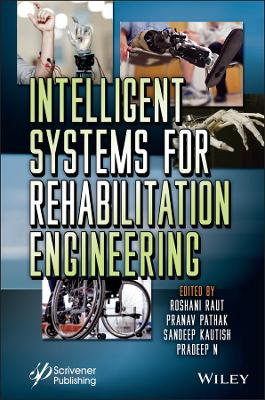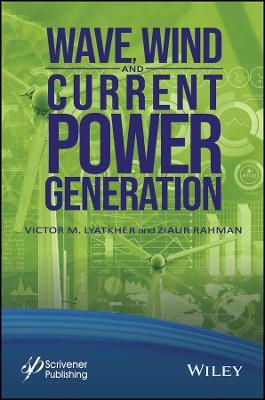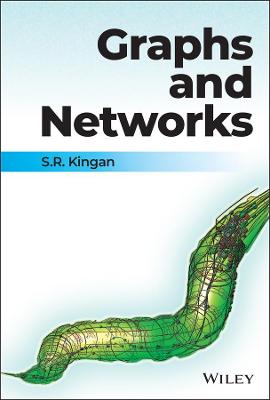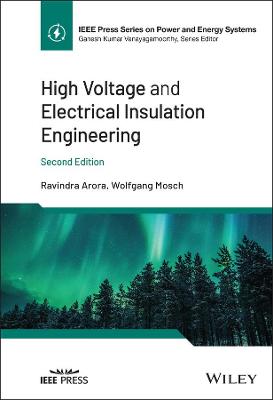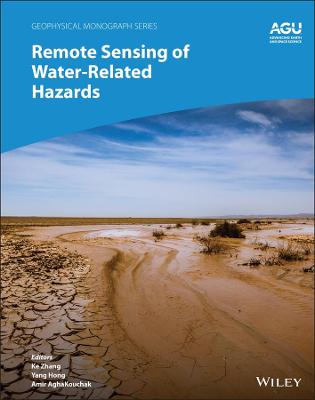Power System Dynamics with Computer-Based Modeling and Analysis
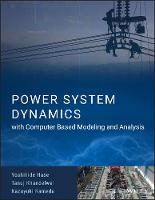 -15%
portes grátis
-15%
portes grátis
Power System Dynamics with Computer-Based Modeling and Analysis
Kameda, Kazuyuki; Hase, Yoshihide; Khandelwal, Tanuj
John Wiley & Sons Inc
01/2020
1136
Dura
Inglês
9781119487456
15 a 20 dias
2980
Preface xxxi
Acknowledgments xxxiii
Part A Power Systems Theories and Practices 1
1 Essentials of Electromagnetism 3
1.1 Overview 3
1.2 Voltage, Current, Electric Power, and Resistance 3
1.3 Electromagnetic Induction (Faraday's Law) 4
1.4 Self Inductance and Mutual Inductance 6
1.5 Mutual Capacitance 7
2 Complex Number Notation (Symbolic Method) and the Laplace Transform 11
2.1 Euler's Formula 11
2.2 Complex Number Notation of Electricity Based on Euler's Formula 12
2.3 LR Circuit Transient Calculation Using Complex Number Notation and the Laplace Transform 14
2.4 LCR Circuit Transient Calculation 16
2.5 Resistive, Inductive, and Capacitive Load, and Phasor Expressions 21
3 Transmission Line Matrices and Symmetrical Components 25
3.1 Overhead Transmission Lines with Inductive LR Constants 25
3.2 Overhead Transmission Lines with Capacitive C Constants 30
3.3 Symmetrical Coordinate Method (Symmetrical Components) 32
3.4 Conversion of a Three-Phase Circuit into a Symmetrical Coordinated Circuit 39
3.5 Transmission Lines by Symmetrical Components 39
3.6 Generator by Symmetrical Components (Simplified Description) 47
3.7 Description of a Three-Phase Load Circuit by Symmetrical Components 49
4 Physics of Transmission Lines and Line Constants 51
4.1 Inductance 51
4.2 Capacitance and Leakage Current 59
4.3 Actual Configuration of Overhead Transmission Lines 66
4.4 Special Properties of Working Inductance and Working Capacitance 68
4.5 MKS Rational Unit System 71
5 The Per-Unit Method 77
5.1 Fundamental Concepts of the PU Method 77
5.2 PU Method for a Single-Phase Circuit 77
5.3 PU Method for Three-Phase Circuits 79
5.4 Base Quantity Modification of Unitized Impedance 80
5.5 Unitized Symmetrical Circuit: Numerical Example 81
6 Transformer Modeling 91
6.1 Single-Phase Three-Winding Transformer 91
6.2 ? ? ?-Connected Three-Phase, Three-Winding Transformer 95
6.3 Three-Phase Transformers with Various Winding Connections 101
6.4 Autotransformers 105
6.5 On-Load Tap-Changing Transformer (LTC Transformer) 107
6.6 Phase-Shifting Transformer 109
6.7 Woodbridge Transformers and Scott Transformers 113
6.8 Neutral Grounding Transformer 116
6.9 Transformer Magnetic Characteristics and Inrush Current Phenomena 118
7 Fault Analysis Based on Symmetrical Components 127
7.1 Fundamental Concepts of Fault Analysis Based on the Symmetrical Coordinate Method 127
7.2 Line-to-Ground Fault (Phase-a to Ground Fault: 1?G) 127
7.3 Fault Analysis at Various Fault Modes 132
7.4 Conductor Opening 137
7.5 Visual Vector Diagrams of Voltages and Currents under Fault Conditions 139
7.6 Three-Phase-Order Misconnections 151
8 Fault Analysis with the ??0-Method 155
8.1 ??0-Method (Clarke-Components) 155
8.2 Fault Analysis with ??0-Components 166
8.3 Advantages of the ??0-Method 171
8.4 Fault-Transient Analysis with Symmetrical Components and the ??0-Method 171
9 Power Cables 175
9.1 Structural Features of Power Cables 175
9.2 Circuit Constants of Power Cables 183
9.3 Metallic Sheaths and Outer Coverings 190
10 Synchronous Generators, Part 1: Circuit Theory 195
10.1 Generator Model in a Phase abc-Domain 195
10.2 dq0 Method (dq0 Components) 203
10.3 Transformation of Generator Equations from the abc-Domain to the dq0-Domain 206
10.4 Physical Meanings of Generator Equations in the dq0-Domain 210
10.5 Generator dq0-Domain Equations 213
10.6 Generator dq0-Domain Equivalent Circuit 218
10.7 Generator Operating Characteristics and Vector Diagram on the d- and q-Axes Plane 220
10.8 Generator Transient Reactance 223
10.9 Symmetrical Equivalent Circuits of Generators 225
10.10 Laplace-Transformed Generator Equations and Time Constants 231
10.12 Relations Between the dq0-Domain and ??0-Domain 239
10.13 Calculating Generator Short-Circuit Transient Current Under Load 239
11 Synchronous Generators, Part 2: Characteristics of Machinery 251
11.1 Apparent Power P + jQ in the abc-, 012-, dq0-Domains 251
11.2 Mechanical (Kinetic) Power and Generating (Electrical) Power 257
11.3 Kinetic Equation for Generators 259
11.4 Generator Operating Characteristics with P-Q (or p-q) Coordinates 269
11.5 Generator Ratings and Capability Curves 271
11.6 Generator's Locus in the pq-Coordinate Plane under Various Operating Conditions 275
11.7 Leading Power-Factor (Under-Excitation Domain) Operation, and UEL Function by AVR 277
11.8 Operation at Over-Excitation (Lagging Power-Factor Operation) 282
11.9 Thermal Generators' Weak Points (Negative-Sequence Current, Higher Harmonic Current, Shaft-Torsional Distortion) 282
11.10 Transient Torsional Twisting Torque of a TG Coupled Shaft 287
11.11 General Description of Modern Thermal/Nuclear TG Units 290
12 Steady-State, Transient, and Dynamic Stability 297
12.1 P-? Curves and Q-? Curves 297
12.2 Power Transfer Limits of Grid-Connected Generators (Steady-State Stability) 299
12.3 Transient Stability 306
12.4 Dynamic Stability 309
12.5 Four-Terminal Circuit and the P ? ? Curve under Fault Conditions 310
12.6 P-? Curve under Various Fault-Mode Conditions 312
12.7 PQV Characteristics and Voltage Instability (Voltage Avalanche) 313
12.8 Generator Characteristics with an AVR 319
12.9 Generator Operation Limit With and Without an AVR in PQ Coordinates 330
12.10 VQ (Voltage and Reactive Power) Control with an AVR 332
13 Induction Generators and Motors (Induction Machines) 337
13.1 Introduction to Induction Motors and Generators 337
13.2 Doubly Fed Induction Generators and Motors 337
13.3 Squirrel-Cage Induction Motors 355
13.4 Proportional Relations of Mechanical Quantities and Electrical Quantities as a Basis of Power-Electronic Control 367
14 Directional Distance Relays and R-X Diagrams 371
14.1 Overview of Protective Relays 371
14.2 Directional Distance Relays (DZ-Ry) and R-X Coordinate Plane 372
14.3 R-X Diagram Locus under Fault Conditions 375
14.4 Impedance Locus under Ordinary Load Conditions and Step-Out Conditions 381
14.5 Impedance Locus Under Faults with Load-Flow Conditions 385
14.6 Loss of Excitation Detection by Distance Relays (40-Relay) 386
15 Lightning and Switching Surge Phenomena and Breaker Switching 391
15.1 Traveling Wave on a Transmission Line, and Equations 391
15.2 Four-Terminal Network Equations between Two Arbitrary Points 398
15.3 Examination of Line Constants 399
15.4 Behavior of Traveling Waves at Transition Points 401
15.5 Surge Overvoltages and Their Three Different, Confusing Notations 404
15.6 Behavior of Traveling Waves at a Lightning-Strike Point 406
15.7 Traveling Wave Phenomena of Three-Phase Transmission Lines 408
15.8 Reflection Lattices and Transient Behavior Modes 413
15.9 Switching Surge Phenomena Caused by Breakers Tripping 415
15.10 Breaker Phase Voltages and Recovery Voltages after Fault Tripping 424
15.11 Three-Phase Breaker TRVs across Independent Poles 426
15.12 Circuit Breakers and Switching Practices 432
15.13 Switching Surge Caused by Line Switches (Disconnecting Switches) 452
15.14 Surge Phenomena Caused on Power Cable Systems 454
15.15 Lightning Surge Caused on Cable Lines 456
15.16 Switching Surge Caused on Cable Lines 458
15.17 Surge Voltages Caused on Cables and GIS Jointed Points 459
16 Overvoltage Phenomena 463
16.1 Neutral-Grounding Methods 463
16.2 Arc-Suppression Coil (Petersen Coil) Neutral-Grounded Method 467
16.3 Overvoltages Caused by a Line-to-Ground Fault 467
16.4 Other Low-Frequency Overvoltage Phenomena (Non-resonant Phenomena) 469
16.5 Lower-Frequency Resonant Overvoltages 472
16.6 Interrupted Ground Fault of a Cable Line in a Neutral-Ungrounded System 475
16.7 Switching Surge Overvoltages 475
16.8 Overvoltage Phenomena Caused by Lightning Strikes 477
17 Insulation Coordination 481
17.1 Overvoltages as Insulation Stresses 481
17.2 Classification of Overvoltages 483
17.3 Fundamental Process of Insulation Coordination 486
17.4 Countermeasures on Transmission Lines to Reduce Overvoltages and Flashover 487
17.5 Tower-Mounted Arrester Devices 489
17.6 Using Unequal Circuit Insulation (Double-Circuit Lines) 490
17.7 Using High-Speed Reclosing 490
17.8 Overvoltage Protection with Arresters at Substations 491
17.9 Station Protection Using OGWs and Reduced Grounding Resistance 499
17.10 Insulation Coordination Details 501
17.11 Transfer Surge Voltages through Transformers, and Generator Protection 509
17.12 Transformer Internal High-Frequency Voltage Oscillation Phenomena 518
17.13 Oil-Filled Transformers Versus Gas-Filled Transformers 524
18 Harmonics and Waveform Distortion Phenomena 527
18.1 Classification of Harmonics and Waveform Distortion 527
18.2 Impact of Harmonics 527
18.3 Harmonic Phenomena Caused by Power Cable Line Faults 529
19 Power Electronic Applications, Part 1: Devices 535
19.1 Fundamental Concepts of Power Electronics 535
19.2 Power Switching with Power Devices 535
19.3 Snubber Circuit 539
19.4 Voltage Conversion with Switching 540
19.5 Power Electronics Devices 542
19.6 Mathematical Background for Analyzing Power Electronics Applications 547
20 Power Electronics Applications, Part 2: Circuit Theory 553
20.1 AC-to-DC Conversion: A Rectifier with a Diode 553
20.2 AC-to-DC Controlled Conversion: Rectifier with a Thyristor 562
20.3 DC-to-DC Converters (DC-to-DC Choppers) 571
20.4 DC-to-AC Inverters 579
20.5 PWM Control of Inverters 583
20.6 AC-to-AC Converters (Cycloconverters) 587
21 Power Electronics Applications, Part 3: Control Theory 589
21.1 Introduction 589
21.2 Driving Motors 589
21.3 Static Var Compensators (SVC: A Thyristor-Based Approach) 597
21.4 Active Filters 603
21.5 Generator Excitation Systems 609
21.6 Adjustable-Speed Pumped-Storage Generator-Motor Units 610
21.7 Wind Generation 615
21.8 Small Hydro Generation 618
21.9 Solar Generation (Photovoltaic Generation) 619
21.10 High-Voltage DC Transmission (HVDC Transmission) 621
21.11 FACTS Technology 625
21.12 Railway Applications 627
21.13 Uninterruptible Power Supplies 628
Appendix A Mathematical Formulae 631
Appendix B Matrix Equation Formulae 635
Part B Digital Computation Theories 639
22 Digital Computation Basics 641
22.1 Introduction 641
22.2 Network Types 642
22.3 Circuit Elements 645
22.4 Ohm's Law 653
22.5 Kirchhoff's Circuit Laws 655
22.6 Electrical Division Principle 656
22.7 Instantaneous, Average, and RMS Values 657
22.8 Nodal Formulation 658
22.9 Procedure for Mesh Analysis 662
22.10 Norton's and Thevenin's Equivalents 664
22.11 Maximum Power Transfer Theorem 668
22.13 Network Topology 675
22.14 Power System Matrices 681
22.15 Transformer Modeling 692
22.16 Transmission Line Modeling 696
23 Power-Flow Methods 701
23.1 Newton-Raphson Method 701
23.2 Gauss-Seidel Method 702
23.3 Adaptive Newton-Raphson Method 703
23.4 Fast-Decoupled Method 703
24 Short-Circuit Methods 705
24.1 ANSI/IEEE Calculation Methods 705
24.2 IEC Calculation Methods 719
25 Harmonics 729
25.1 Problem Formulation 729
25.2 Methodology and Standards 733
25.3 Harmonic Indices 735
25.4 Harmonic Component Modeling 740
25.5 Power System Components 741
25.6 System Resonance 743
25.7 Harmonic Mitigation 744
26 Reliability 749
26.1 Methodology and Standards 749
26.2 Performance Indices 752
27 Numerical Integration Methods 755
27.1 Accuracy 755
27.2 Stability 755
27.3 Stiffness 757
27.4 Predictor-Corrector 757
27.5 Runge-Kutta 758
28 Optimization 761
28.1 Power-Flow Injections 761
28.2 Voltage Magnitude Constraints 762
28.3 Line-Flow Thermal Constraints 762
28.4 Line-Flow Constraints as Current Limitations 763
28.5 Line-Flow Constraints as Voltage Angle Constraints 763
Part C Analytical Practices and Examples using ETAP 765
29 Introduction to Power System Analysis 767
29.1 Planning Studies 767
29.2 Need for Power-System Analysis 768
29.3 Computers in Power Engineering 768
29.4 Study Approach 768
29.5 Operator Training 772
29.6 System Reliability and Maintenance 772
29.7 Electrical Transient Analyzer Program (ETAP) 772
30 One-Line Diagrams 777
30.1 Introduction 777
30.2 Engineering Parameters 777
30.3 One-Line Diagram Symbols 778
30.4 Power-System Configurations 780
30.5 Network Topology Processing 787
30.6 Illustrative Example - Per-Unit and Single-Line Diagram 790
31 Load Flow 791
31.1 Introduction 791
31.2 Study Objectives 791
31.3 Problem Formulation 792
31.4 Calculation Methodology 794
31.5 Required Data for ETAP 796
31.6 Data Collection and Preparation 797
31.7 Model Validation 797
31.8 Study Scenarios 799
31.9 Contingency Analysis 800
31.10 Optimal or Optimum Power Flow 801
31.11 Illustrative Examples 803
32 Short-Circuit/Fault Analysis 841
32.1 Introduction 841
32.2 Analysis Objectives 841
32.3 Methodology and Standards 846
32.4 Study Scenarios 855
32.5 Results and Reports 856
32.6 Illustrative Examples 858
33 Motor Starting 881
33.1 Methods 881
33.2 Analysis Objectives 893
33.3 Methodology and Standards 894
33.4 Required Data 902
33.5 Illustrative Examples 903
33.6 Motor-Starting Plots and Results 913
33.7 Motor-Starting Alerts 916
34 Harmonics 917
34.1 Introduction 917
34.2 Analysis Objectives 919
34.3 Required Data 921
34.4 Harmonic Load Flow and Frequency Scan 923
34.5 Illustrative Examples 924
35 Transient Stability 939
35.1 Introduction 939
35.2 Analysis Objectives 940
35.3 Basic Concepts of Transient Stability 942
35.4 Dynamic Models 944
35.5 User-Defined Models 967
35.6 Parameter Tuning 967
35.7 Single-Generator Power System Model 971
35.8 Data Collection and Preparation 973
35.9 Study Scenarios 974
35.10 Stability Improvement 977
35.11 System Simulation 977
35.12 Illustrative Examples 979
36 Reliability Assessment 1003
36.1 Introduction 1003
36.2 Analysis Objectives 1003
36.3 Problem Formulation 1004
36.4 Required Data 1005
36.5 Illustrative Examples 1005
37 Protective Device Coordination 1019
37.1 Introduction 1019
37.2 Relays 1022
37.3 Methodology 1028
37.4 Required Data 1035
37.5 Principle of Protection 1036
37.6 Principle of Selectivity/Coordination 1037
37.7 Art of Protection and Coordination >600 V 1040
37.8 Illustrative Examples 1048
Appendix C Standards, Regulations, and Best Practice 1071
Further Reading 1083
Index 1085
Preface xxxi
Acknowledgments xxxiii
Part A Power Systems Theories and Practices 1
1 Essentials of Electromagnetism 3
1.1 Overview 3
1.2 Voltage, Current, Electric Power, and Resistance 3
1.3 Electromagnetic Induction (Faraday's Law) 4
1.4 Self Inductance and Mutual Inductance 6
1.5 Mutual Capacitance 7
2 Complex Number Notation (Symbolic Method) and the Laplace Transform 11
2.1 Euler's Formula 11
2.2 Complex Number Notation of Electricity Based on Euler's Formula 12
2.3 LR Circuit Transient Calculation Using Complex Number Notation and the Laplace Transform 14
2.4 LCR Circuit Transient Calculation 16
2.5 Resistive, Inductive, and Capacitive Load, and Phasor Expressions 21
3 Transmission Line Matrices and Symmetrical Components 25
3.1 Overhead Transmission Lines with Inductive LR Constants 25
3.2 Overhead Transmission Lines with Capacitive C Constants 30
3.3 Symmetrical Coordinate Method (Symmetrical Components) 32
3.4 Conversion of a Three-Phase Circuit into a Symmetrical Coordinated Circuit 39
3.5 Transmission Lines by Symmetrical Components 39
3.6 Generator by Symmetrical Components (Simplified Description) 47
3.7 Description of a Three-Phase Load Circuit by Symmetrical Components 49
4 Physics of Transmission Lines and Line Constants 51
4.1 Inductance 51
4.2 Capacitance and Leakage Current 59
4.3 Actual Configuration of Overhead Transmission Lines 66
4.4 Special Properties of Working Inductance and Working Capacitance 68
4.5 MKS Rational Unit System 71
5 The Per-Unit Method 77
5.1 Fundamental Concepts of the PU Method 77
5.2 PU Method for a Single-Phase Circuit 77
5.3 PU Method for Three-Phase Circuits 79
5.4 Base Quantity Modification of Unitized Impedance 80
5.5 Unitized Symmetrical Circuit: Numerical Example 81
6 Transformer Modeling 91
6.1 Single-Phase Three-Winding Transformer 91
6.2 ? ? ?-Connected Three-Phase, Three-Winding Transformer 95
6.3 Three-Phase Transformers with Various Winding Connections 101
6.4 Autotransformers 105
6.5 On-Load Tap-Changing Transformer (LTC Transformer) 107
6.6 Phase-Shifting Transformer 109
6.7 Woodbridge Transformers and Scott Transformers 113
6.8 Neutral Grounding Transformer 116
6.9 Transformer Magnetic Characteristics and Inrush Current Phenomena 118
7 Fault Analysis Based on Symmetrical Components 127
7.1 Fundamental Concepts of Fault Analysis Based on the Symmetrical Coordinate Method 127
7.2 Line-to-Ground Fault (Phase-a to Ground Fault: 1?G) 127
7.3 Fault Analysis at Various Fault Modes 132
7.4 Conductor Opening 137
7.5 Visual Vector Diagrams of Voltages and Currents under Fault Conditions 139
7.6 Three-Phase-Order Misconnections 151
8 Fault Analysis with the ??0-Method 155
8.1 ??0-Method (Clarke-Components) 155
8.2 Fault Analysis with ??0-Components 166
8.3 Advantages of the ??0-Method 171
8.4 Fault-Transient Analysis with Symmetrical Components and the ??0-Method 171
9 Power Cables 175
9.1 Structural Features of Power Cables 175
9.2 Circuit Constants of Power Cables 183
9.3 Metallic Sheaths and Outer Coverings 190
10 Synchronous Generators, Part 1: Circuit Theory 195
10.1 Generator Model in a Phase abc-Domain 195
10.2 dq0 Method (dq0 Components) 203
10.3 Transformation of Generator Equations from the abc-Domain to the dq0-Domain 206
10.4 Physical Meanings of Generator Equations in the dq0-Domain 210
10.5 Generator dq0-Domain Equations 213
10.6 Generator dq0-Domain Equivalent Circuit 218
10.7 Generator Operating Characteristics and Vector Diagram on the d- and q-Axes Plane 220
10.8 Generator Transient Reactance 223
10.9 Symmetrical Equivalent Circuits of Generators 225
10.10 Laplace-Transformed Generator Equations and Time Constants 231
10.12 Relations Between the dq0-Domain and ??0-Domain 239
10.13 Calculating Generator Short-Circuit Transient Current Under Load 239
11 Synchronous Generators, Part 2: Characteristics of Machinery 251
11.1 Apparent Power P + jQ in the abc-, 012-, dq0-Domains 251
11.2 Mechanical (Kinetic) Power and Generating (Electrical) Power 257
11.3 Kinetic Equation for Generators 259
11.4 Generator Operating Characteristics with P-Q (or p-q) Coordinates 269
11.5 Generator Ratings and Capability Curves 271
11.6 Generator's Locus in the pq-Coordinate Plane under Various Operating Conditions 275
11.7 Leading Power-Factor (Under-Excitation Domain) Operation, and UEL Function by AVR 277
11.8 Operation at Over-Excitation (Lagging Power-Factor Operation) 282
11.9 Thermal Generators' Weak Points (Negative-Sequence Current, Higher Harmonic Current, Shaft-Torsional Distortion) 282
11.10 Transient Torsional Twisting Torque of a TG Coupled Shaft 287
11.11 General Description of Modern Thermal/Nuclear TG Units 290
12 Steady-State, Transient, and Dynamic Stability 297
12.1 P-? Curves and Q-? Curves 297
12.2 Power Transfer Limits of Grid-Connected Generators (Steady-State Stability) 299
12.3 Transient Stability 306
12.4 Dynamic Stability 309
12.5 Four-Terminal Circuit and the P ? ? Curve under Fault Conditions 310
12.6 P-? Curve under Various Fault-Mode Conditions 312
12.7 PQV Characteristics and Voltage Instability (Voltage Avalanche) 313
12.8 Generator Characteristics with an AVR 319
12.9 Generator Operation Limit With and Without an AVR in PQ Coordinates 330
12.10 VQ (Voltage and Reactive Power) Control with an AVR 332
13 Induction Generators and Motors (Induction Machines) 337
13.1 Introduction to Induction Motors and Generators 337
13.2 Doubly Fed Induction Generators and Motors 337
13.3 Squirrel-Cage Induction Motors 355
13.4 Proportional Relations of Mechanical Quantities and Electrical Quantities as a Basis of Power-Electronic Control 367
14 Directional Distance Relays and R-X Diagrams 371
14.1 Overview of Protective Relays 371
14.2 Directional Distance Relays (DZ-Ry) and R-X Coordinate Plane 372
14.3 R-X Diagram Locus under Fault Conditions 375
14.4 Impedance Locus under Ordinary Load Conditions and Step-Out Conditions 381
14.5 Impedance Locus Under Faults with Load-Flow Conditions 385
14.6 Loss of Excitation Detection by Distance Relays (40-Relay) 386
15 Lightning and Switching Surge Phenomena and Breaker Switching 391
15.1 Traveling Wave on a Transmission Line, and Equations 391
15.2 Four-Terminal Network Equations between Two Arbitrary Points 398
15.3 Examination of Line Constants 399
15.4 Behavior of Traveling Waves at Transition Points 401
15.5 Surge Overvoltages and Their Three Different, Confusing Notations 404
15.6 Behavior of Traveling Waves at a Lightning-Strike Point 406
15.7 Traveling Wave Phenomena of Three-Phase Transmission Lines 408
15.8 Reflection Lattices and Transient Behavior Modes 413
15.9 Switching Surge Phenomena Caused by Breakers Tripping 415
15.10 Breaker Phase Voltages and Recovery Voltages after Fault Tripping 424
15.11 Three-Phase Breaker TRVs across Independent Poles 426
15.12 Circuit Breakers and Switching Practices 432
15.13 Switching Surge Caused by Line Switches (Disconnecting Switches) 452
15.14 Surge Phenomena Caused on Power Cable Systems 454
15.15 Lightning Surge Caused on Cable Lines 456
15.16 Switching Surge Caused on Cable Lines 458
15.17 Surge Voltages Caused on Cables and GIS Jointed Points 459
16 Overvoltage Phenomena 463
16.1 Neutral-Grounding Methods 463
16.2 Arc-Suppression Coil (Petersen Coil) Neutral-Grounded Method 467
16.3 Overvoltages Caused by a Line-to-Ground Fault 467
16.4 Other Low-Frequency Overvoltage Phenomena (Non-resonant Phenomena) 469
16.5 Lower-Frequency Resonant Overvoltages 472
16.6 Interrupted Ground Fault of a Cable Line in a Neutral-Ungrounded System 475
16.7 Switching Surge Overvoltages 475
16.8 Overvoltage Phenomena Caused by Lightning Strikes 477
17 Insulation Coordination 481
17.1 Overvoltages as Insulation Stresses 481
17.2 Classification of Overvoltages 483
17.3 Fundamental Process of Insulation Coordination 486
17.4 Countermeasures on Transmission Lines to Reduce Overvoltages and Flashover 487
17.5 Tower-Mounted Arrester Devices 489
17.6 Using Unequal Circuit Insulation (Double-Circuit Lines) 490
17.7 Using High-Speed Reclosing 490
17.8 Overvoltage Protection with Arresters at Substations 491
17.9 Station Protection Using OGWs and Reduced Grounding Resistance 499
17.10 Insulation Coordination Details 501
17.11 Transfer Surge Voltages through Transformers, and Generator Protection 509
17.12 Transformer Internal High-Frequency Voltage Oscillation Phenomena 518
17.13 Oil-Filled Transformers Versus Gas-Filled Transformers 524
18 Harmonics and Waveform Distortion Phenomena 527
18.1 Classification of Harmonics and Waveform Distortion 527
18.2 Impact of Harmonics 527
18.3 Harmonic Phenomena Caused by Power Cable Line Faults 529
19 Power Electronic Applications, Part 1: Devices 535
19.1 Fundamental Concepts of Power Electronics 535
19.2 Power Switching with Power Devices 535
19.3 Snubber Circuit 539
19.4 Voltage Conversion with Switching 540
19.5 Power Electronics Devices 542
19.6 Mathematical Background for Analyzing Power Electronics Applications 547
20 Power Electronics Applications, Part 2: Circuit Theory 553
20.1 AC-to-DC Conversion: A Rectifier with a Diode 553
20.2 AC-to-DC Controlled Conversion: Rectifier with a Thyristor 562
20.3 DC-to-DC Converters (DC-to-DC Choppers) 571
20.4 DC-to-AC Inverters 579
20.5 PWM Control of Inverters 583
20.6 AC-to-AC Converters (Cycloconverters) 587
21 Power Electronics Applications, Part 3: Control Theory 589
21.1 Introduction 589
21.2 Driving Motors 589
21.3 Static Var Compensators (SVC: A Thyristor-Based Approach) 597
21.4 Active Filters 603
21.5 Generator Excitation Systems 609
21.6 Adjustable-Speed Pumped-Storage Generator-Motor Units 610
21.7 Wind Generation 615
21.8 Small Hydro Generation 618
21.9 Solar Generation (Photovoltaic Generation) 619
21.10 High-Voltage DC Transmission (HVDC Transmission) 621
21.11 FACTS Technology 625
21.12 Railway Applications 627
21.13 Uninterruptible Power Supplies 628
Appendix A Mathematical Formulae 631
Appendix B Matrix Equation Formulae 635
Part B Digital Computation Theories 639
22 Digital Computation Basics 641
22.1 Introduction 641
22.2 Network Types 642
22.3 Circuit Elements 645
22.4 Ohm's Law 653
22.5 Kirchhoff's Circuit Laws 655
22.6 Electrical Division Principle 656
22.7 Instantaneous, Average, and RMS Values 657
22.8 Nodal Formulation 658
22.9 Procedure for Mesh Analysis 662
22.10 Norton's and Thevenin's Equivalents 664
22.11 Maximum Power Transfer Theorem 668
22.13 Network Topology 675
22.14 Power System Matrices 681
22.15 Transformer Modeling 692
22.16 Transmission Line Modeling 696
23 Power-Flow Methods 701
23.1 Newton-Raphson Method 701
23.2 Gauss-Seidel Method 702
23.3 Adaptive Newton-Raphson Method 703
23.4 Fast-Decoupled Method 703
24 Short-Circuit Methods 705
24.1 ANSI/IEEE Calculation Methods 705
24.2 IEC Calculation Methods 719
25 Harmonics 729
25.1 Problem Formulation 729
25.2 Methodology and Standards 733
25.3 Harmonic Indices 735
25.4 Harmonic Component Modeling 740
25.5 Power System Components 741
25.6 System Resonance 743
25.7 Harmonic Mitigation 744
26 Reliability 749
26.1 Methodology and Standards 749
26.2 Performance Indices 752
27 Numerical Integration Methods 755
27.1 Accuracy 755
27.2 Stability 755
27.3 Stiffness 757
27.4 Predictor-Corrector 757
27.5 Runge-Kutta 758
28 Optimization 761
28.1 Power-Flow Injections 761
28.2 Voltage Magnitude Constraints 762
28.3 Line-Flow Thermal Constraints 762
28.4 Line-Flow Constraints as Current Limitations 763
28.5 Line-Flow Constraints as Voltage Angle Constraints 763
Part C Analytical Practices and Examples using ETAP 765
29 Introduction to Power System Analysis 767
29.1 Planning Studies 767
29.2 Need for Power-System Analysis 768
29.3 Computers in Power Engineering 768
29.4 Study Approach 768
29.5 Operator Training 772
29.6 System Reliability and Maintenance 772
29.7 Electrical Transient Analyzer Program (ETAP) 772
30 One-Line Diagrams 777
30.1 Introduction 777
30.2 Engineering Parameters 777
30.3 One-Line Diagram Symbols 778
30.4 Power-System Configurations 780
30.5 Network Topology Processing 787
30.6 Illustrative Example - Per-Unit and Single-Line Diagram 790
31 Load Flow 791
31.1 Introduction 791
31.2 Study Objectives 791
31.3 Problem Formulation 792
31.4 Calculation Methodology 794
31.5 Required Data for ETAP 796
31.6 Data Collection and Preparation 797
31.7 Model Validation 797
31.8 Study Scenarios 799
31.9 Contingency Analysis 800
31.10 Optimal or Optimum Power Flow 801
31.11 Illustrative Examples 803
32 Short-Circuit/Fault Analysis 841
32.1 Introduction 841
32.2 Analysis Objectives 841
32.3 Methodology and Standards 846
32.4 Study Scenarios 855
32.5 Results and Reports 856
32.6 Illustrative Examples 858
33 Motor Starting 881
33.1 Methods 881
33.2 Analysis Objectives 893
33.3 Methodology and Standards 894
33.4 Required Data 902
33.5 Illustrative Examples 903
33.6 Motor-Starting Plots and Results 913
33.7 Motor-Starting Alerts 916
34 Harmonics 917
34.1 Introduction 917
34.2 Analysis Objectives 919
34.3 Required Data 921
34.4 Harmonic Load Flow and Frequency Scan 923
34.5 Illustrative Examples 924
35 Transient Stability 939
35.1 Introduction 939
35.2 Analysis Objectives 940
35.3 Basic Concepts of Transient Stability 942
35.4 Dynamic Models 944
35.5 User-Defined Models 967
35.6 Parameter Tuning 967
35.7 Single-Generator Power System Model 971
35.8 Data Collection and Preparation 973
35.9 Study Scenarios 974
35.10 Stability Improvement 977
35.11 System Simulation 977
35.12 Illustrative Examples 979
36 Reliability Assessment 1003
36.1 Introduction 1003
36.2 Analysis Objectives 1003
36.3 Problem Formulation 1004
36.4 Required Data 1005
36.5 Illustrative Examples 1005
37 Protective Device Coordination 1019
37.1 Introduction 1019
37.2 Relays 1022
37.3 Methodology 1028
37.4 Required Data 1035
37.5 Principle of Protection 1036
37.6 Principle of Selectivity/Coordination 1037
37.7 Art of Protection and Coordination >600 V 1040
37.8 Illustrative Examples 1048
Appendix C Standards, Regulations, and Best Practice 1071
Further Reading 1083
Index 1085

